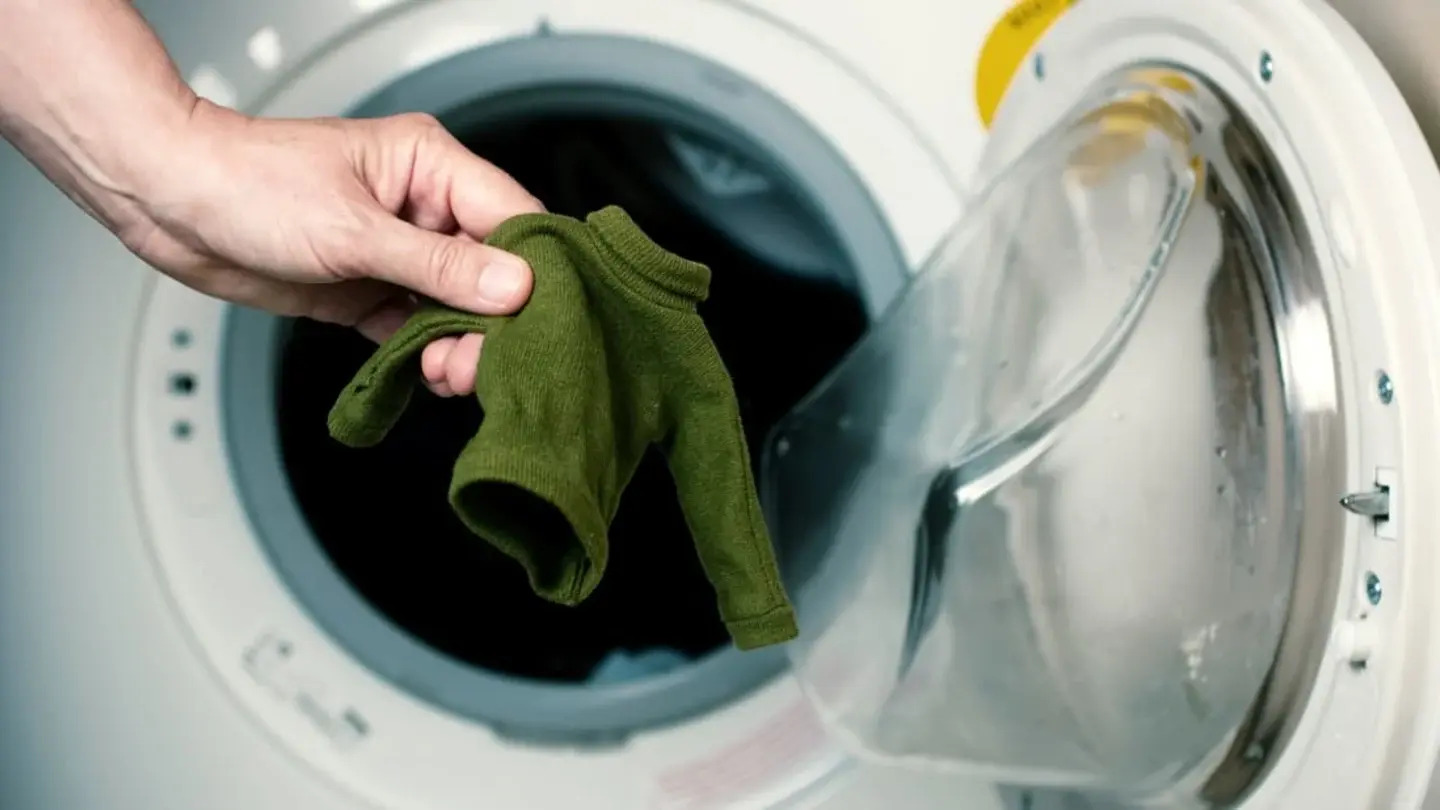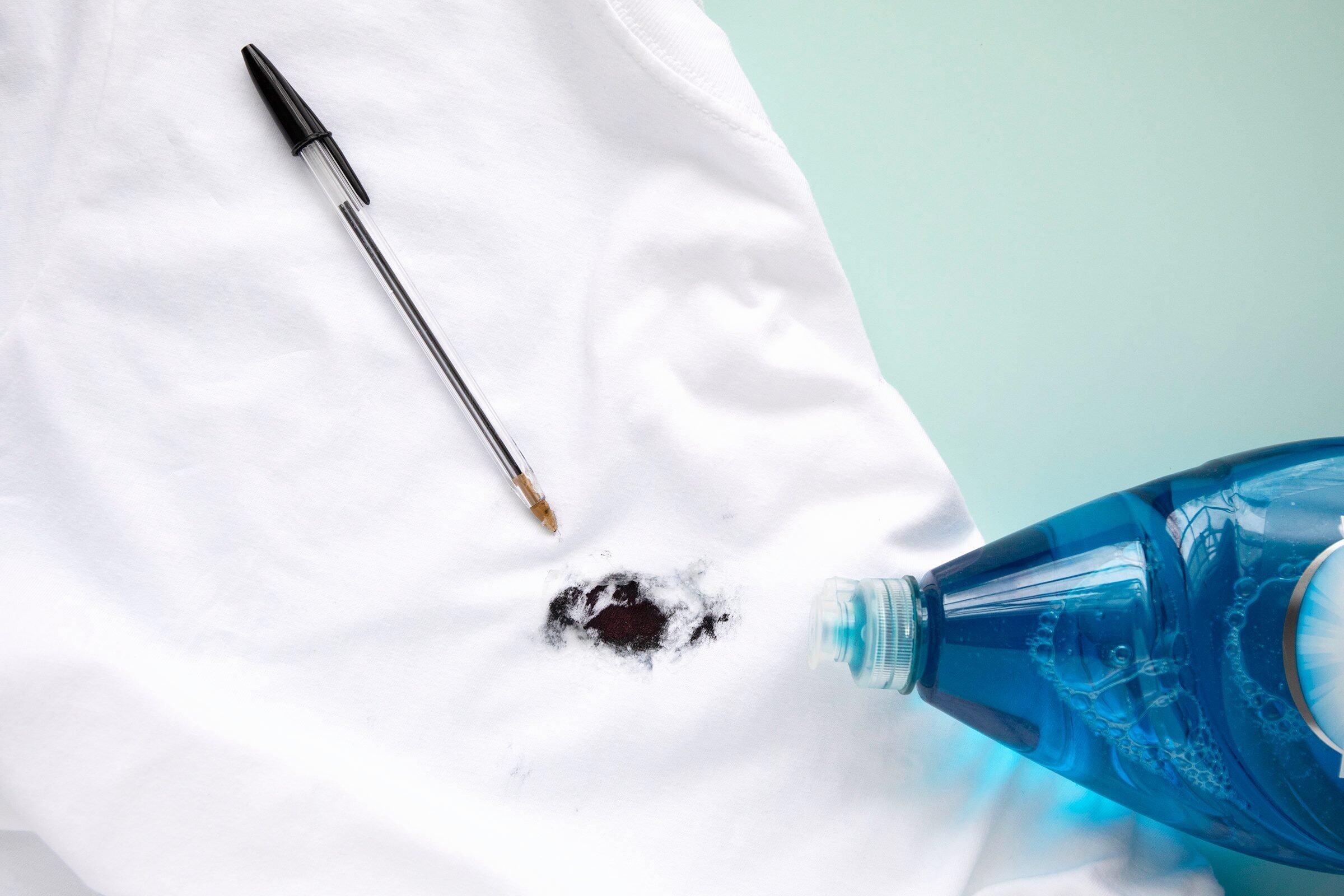

Articles
How Do Clothes Shrink In The Dryer
Modified: January 6, 2024
Discover the reasons why your clothes shrink in the dryer and learn how to prevent it. Read articles on clothing shrinkage and laundry tips.
(Many of the links in this article redirect to a specific reviewed product. Your purchase of these products through affiliate links helps to generate commission for Storables.com, at no extra cost. Learn more)
Introduction
Have you ever experienced the frustration of finding your favorite shirt or pair of jeans suddenly too small after taking them out of the dryer? The phenomenon of clothes shrinking in the dryer is a common occurrence that many of us have encountered. Understanding why this happens and how to prevent it can save you from the disappointment of shrinking your beloved garments.
When clothes go through the drying process, they are subjected to a combination of heat, moisture, and agitation. These factors can cause the fabric to contract, resulting in a smaller and tighter fit. The shrinkage process can vary depending on several factors, including the fabric type, construction, and care instructions.
In this article, we will delve into the science behind clothes shrinking and explore the different factors that contribute to this phenomenon. We will also discuss the types of fabrics that are more prone to shrinking and provide essential precautions to prevent shrinkage. Additionally, we will share some tips on how to minimize shrinkage when using a dryer and debunk common misconceptions surrounding clothes shrinkage.
So, if you’ve ever wondered why your clothes seem to magically shrink in the dryer, keep reading to uncover the secrets behind this frustrating but preventable occurrence!
Key Takeaways:
- Understanding the Shrinkage Process
Clothes shrink in the dryer due to heat, moisture, and agitation, causing fibers to contract. Natural fibers like cotton are more prone to shrinkage, while synthetic fibers like polyester are more resistant. - Precautions to Prevent Shrinkage
To prevent clothes from shrinking in the dryer, follow care instructions, use cold water for washing, air dry or use low heat, and separate delicate fabrics. By taking these precautions, you can preserve the fit and longevity of your clothes.
Read more: How To Shrink Clothes In The Dryer
Understanding the Shrinkage Process
To understand why clothes shrink in the dryer, it’s important to have a basic understanding of fabric composition and the behavior of fibers. Fabrics are made up of various fibers, such as cotton, wool, polyester, and more. These fibers can be either natural or synthetic, each with its own distinct characteristics.
When clothes are exposed to heat and moisture in the dryer, the fibers within the fabric undergo structural changes. Heat causes the fibers to expand, while moisture facilitates the movement of the fibers. As a result, the fabric contracts and becomes tighter, leading to shrinkage in the garment’s overall dimensions.
Additionally, the agitation and tumbling action of the dryer contribute to the shrinkage process. The constant movement and friction between the fibers further compact them, making the garment even smaller.
It’s worth noting that different fabrics react differently to the drying process. Natural fibers, such as cotton and wool, have a higher tendency to shrink due to their absorbent nature. These fibers can easily absorb moisture, causing them to swell and contract when exposed to heat.
On the other hand, synthetic fibers like polyester and nylon are less susceptible to shrinkage. These fibers are more resistant to moisture absorption and have a higher melting point, making them more heat-resistant in the dryer. However, it’s important to note that while synthetic fibers may not shrink as much as natural fibers, they can still experience some degree of shrinkage.
Understanding the shrinkage process is crucial in taking the necessary measures to prevent excessive shrinkage and preserve the fit and shape of your clothes. By knowing how different fibers behave in the dryer, you can make informed decisions when it comes to selecting the appropriate drying method and taking care of your garments.
Factors that Contribute to Shrinkage
Several factors can contribute to the shrinkage of clothes in the dryer. Understanding these factors can help you take preventive measures to minimize shrinkage. Here are some key factors to consider:
1. Fabric Type:
As mentioned earlier, the type of fabric plays a significant role in the shrinkage process. Natural fibers, such as cotton and wool, are more prone to shrinking due to their ability to absorb moisture. On the other hand, synthetic fibers like polyester and nylon tend to have higher heat and moisture resistance, resulting in less shrinkage. Blended fabrics, which combine natural and synthetic fibers, can also exhibit varying levels of shrinkage.
2. Construction and Weave:
The way the fabric is constructed and woven can also contribute to shrinkage. Fabrics with a looser weave or knit structure are more likely to shrink as the fibers move and contract more freely. Tighter weaves or more stable knit constructions are generally less prone to shrinkage. Additionally, fabrics with a higher thread count are typically less likely to shrink compared to those with a lower thread count.
Read more: What Fabrics Shrink In The Dryer
3. Care Instructions:
Following the care instructions provided on the clothing label is crucial to prevent shrinkage. Manufacturers often provide specific guidance on how to launder and dry clothes to minimize shrinkage. The recommended temperature settings and drying methods should be followed closely to maintain the garment’s original size and shape. Ignoring or incorrectly interpreting these instructions can lead to unwanted shrinkage.
4. Heat and Duration:
Higher temperatures and longer drying times can exacerbate shrinkage. Heat causes the fibers to expand and contract, leading to more significant shrinkage. It is advisable to use the lowest heat setting possible and reduce the drying time to minimize the risk of shrinking your clothes. Additionally, removing the garments from the dryer as soon as they are dry, rather than allowing them to continue tumbling, can help prevent over-drying and shrinkage.
5. Pre-existing Fabric Shrinkage:
In some cases, fabric shrinkage may occur even before the garment reaches your dryer. This can happen during the fabric manufacturing process, where the fabric is pre-shrunk to minimize further shrinkage. However, pre-shrunk fabrics may still have some residual shrinkage, especially if exposed to excessive heat or agitation. It’s essential to be aware of the fabric’s potential shrinkage tendencies, even if it claims to be pre-shrunk.
By considering these factors and taking appropriate precautions, you can reduce the chances of clothes shrinking in the dryer and extend the lifespan of your favorite garments.
Fabric Types that are Prone to Shrinking
When it comes to fabric types, some are more prone to shrinking than others. Understanding which fabrics are more likely to shrink can help you make informed decisions about how to care for your clothes. Here are a few fabric types that are known to be more susceptible to shrinkage:
Read more: How To Shrink Crocs With A Hair Dryer
1. Cotton:
Cotton is a popular natural fiber known for its breathability and comfort. However, it is highly absorbent and prone to shrinking when exposed to heat and moisture. Cotton garments, especially those made from non-pre-shrunk cotton, can experience significant shrinkage in the dryer. It is important to follow the care instructions for cotton garments and use low heat settings to minimize shrinkage.
2. Wool:
Wool is another natural fiber that is known for its warmth and insulation properties. While wool has excellent elasticity and can regain its shape after stretching, it is susceptible to shrinking when washed or dried improperly. Heat and agitation can cause the wool fibers to tangle and contract, leading to shrinkage. To prevent excessive shrinkage, it is best to hand wash or use the delicate cycle with cold water for wool garments and lay them flat to dry.
3. Rayon:
Rayon is a semi-synthetic fabric made from cellulose fibers. It is lightweight and breathable, often used in clothing such as shirts, dresses, and skirts. However, rayon fabrics can shrink if exposed to high temperatures during washing or drying. It is advisable to hand wash or use the gentle cycle with cold water and air dry rayon garments to avoid shrinkage.
4. Linen:
Linen is a natural fabric made from flax fibers and is known for its cool and lightweight properties. While linen is generally durable, it can shrink if exposed to heat. It’s best to machine wash linen garments with mild detergent on a gentle cycle with cold water and air dry them. Some shrinkage may still occur, but it can be minimized by following proper care instructions.
Read more: What Shrinks Clothes The Washer Or Dryer
5. Silk:
Silk is a delicate and luxurious fabric that requires special care. While silk is not prone to significant shrinkage, it can still shrink when exposed to high temperatures or harsh agitation. It is recommended to hand wash silk garments in cold water or use the delicate cycle with gentle detergent. Air drying or using a low heat setting in the dryer can help prevent shrinkage.
Remember, while these fabrics are more susceptible to shrinking, it doesn’t mean that shrinkage is inevitable. By following proper care instructions and taking precautions, you can minimize shrinkage and enjoy your favorite garments for longer.
Precautions to Prevent Shrinkage
While some fabrics are more prone to shrinking than others, there are several precautions you can take to prevent or minimize shrinkage. By following these precautions, you can help preserve the fit and longevity of your clothes. Here are some essential measures to keep in mind:
1. Read and Follow Care Instructions:
Always read and follow the care instructions provided on the clothing label. The manufacturer provides specific guidelines on how to launder and dry the garment without causing excessive shrinkage. Pay attention to temperature settings, washing methods, and any special instructions to ensure you’re treating your clothes properly.
2. Use Cold Water for Washing:
When washing your clothes, opt for cold water instead of hot water. Hot water can agitate the fibers and cause them to shrink. Cold water is gentler on fabrics and helps retain their original size and shape. Additionally, using a gentle or delicate setting on your washing machine can further minimize any potential damage.
Read more: How To Use Shrink Wrap With A Hair Dryer
3. Air Dry or Use Low Heat:
Drying clothes with high heat is one of the main culprits of shrinkage. Whenever possible, air dry your garments by laying them flat on a clean surface or hanging them on a clothesline. If you prefer to use a dryer, select the lowest heat setting to minimize shrinkage. Removing the clothes from the dryer while slightly damp and allowing them to air dry completely can help prevent further shrinkage.
4. Avoid Overcrowding the Dryer:
Overcrowding the dryer can lead to more agitation and friction between the garments, which can result in shrinkage. Ensure there is enough space for the clothes to move and tumble freely. It’s better to dry clothes in smaller batches rather than cramming them all in at once.
5. Test Garments Before Washing and Drying:
If you’re unsure about the shrinkage potential of a particular garment, it’s a good idea to do a test run. Test a small, inconspicuous area of the garment by washing and drying it using the recommended methods. This will give you an idea of how the fabric reacts and whether it is prone to significant shrinkage.
6. Use Shrinkage-Reducing Products:
There are products available on the market, such as fabric conditioners or shrinkage-reducing sprays, designed to minimize shrinkage in fabrics. These products can help relax the fibers and reduce the chances of excessive shrinkage when used according to the instructions.
By adopting these precautions and incorporating them into your laundry routine, you can help prevent shrinkage and maintain the original size and fit of your clothes. It’s worth the extra care and effort to ensure that your favorite garments last longer and continue to bring you comfort and style.
How to Minimize Shrinkage in the Dryer
While the dryer can contribute to clothes shrinking, there are several steps you can take to minimize shrinkage and keep your garments in their original size. By following these tips, you can enjoy the convenience of using a dryer without sacrificing the fit and quality of your clothes:
1. Use the Lowest Heat Setting:
Setting your dryer to the lowest heat setting helps reduce the risk of excessive shrinkage. High temperatures can cause the fibers to contract and tighten, leading to shrinkage. Opting for low or medium heat ensures a gentler drying process that is less likely to affect the size and shape of your clothes.
2. Don’t Overdry:
Avoid over-drying your clothes in the dryer, as this can contribute to shrinkage. Remove the garments from the dryer as soon as they are dry or slightly damp. Overdrying can cause the fibers to become brittle, leading to shrinkage and potential damage to the fabric.
3. Use Dryer Balls or Towels:
Adding dryer balls or clean towels to the dryer can help reduce shrinkage. These items create space between the garments, allowing them to move more freely and preventing excessive friction and agitation. This helps minimize the risk of shrinkage and also reduces the drying time.
4. Separate Delicate and Heavy Fabrics:
Separate delicate and heavy fabrics when drying to prevent the heavier items from putting extra stress on the delicate ones. Delicate fabrics may require a shorter drying time, so separating them can ensure they are not exposed to excessive heat and tumbling. This extra care can go a long way in preserving the size and quality of your clothes.
5. Air Dry Certain Garments:
For garments that are more prone to shrinking or those that you are particularly concerned about, consider air drying them instead of using the dryer. Lay them flat on a clean surface or hang them on a clothesline to dry naturally. This gentle drying method minimizes the risk of shrinkage and helps maintain the original size and shape of the garments.
6. Follow Care Instructions:
Always follow the care instructions provided by the manufacturer. These instructions are specific to the fabric type and can guide you on the best drying methods to prevent shrinkage. Ignoring these instructions can result in unwanted shrinkage and damage to your clothes.
By implementing these strategies, you can effectively minimize shrinkage in the dryer and keep your clothes fitting their best. Your garments will retain their original shape, allowing you to enjoy them for a longer period without the disappointment of finding them too small after drying.
Common Misconceptions about Clothes Shrinkage
When it comes to clothes shrinkage, there are several misconceptions that can lead to confusion and frustration. Understanding these misconceptions can help you make informed decisions about how to care for your garments. Here are some common misconceptions about clothes shrinkage:
Read more: How To Shrink A Mattress
1. All Fabrics Will Shrink:
While it’s true that certain fabrics, such as cotton and wool, are more prone to shrinking, not all fabrics will shrink significantly. Fabrics like polyester, nylon, and spandex have higher heat and moisture resistance, making them less susceptible to shrinkage. It’s essential to consider the specific fabric composition when assessing the likelihood of shrinkage.
2. Clothes Only Shrink the First Time They Are Washed:
While it’s true that some fabrics may experience more significant shrinkage during the first wash, clothes can continue to shrink with each subsequent wash and dry cycle if not properly cared for. It is important to follow the care instructions consistently to minimize any further shrinkage.
3. Cold Water Always Prevents Shrinkage:
While cold water is generally recommended to minimize shrinkage, it is not a foolproof solution. Factors such as agitation, drying temperature, and fabric type also contribute to shrinkage. Using cold water alone may not completely prevent shrinkage if other factors are not taken into consideration.
4. Air Drying Eliminates Shrinkage:
While air drying can help minimize shrinkage, it does not guarantee complete elimination. Some fabrics may still experience slight shrinkage, even with air drying. It’s important to consider the fabric type, construction, and other factors discussed earlier to effectively prevent shrinkage.
Read more: How To Shrink A Duvet Cover
5. Pre-Shrunk Fabrics are Immune to Shrinkage:
Pre-shrunk fabrics undergo a process during manufacturing to minimize further shrinkage. However, it is essential to note that pre-shrunk fabrics may still have some residual shrinkage potential, especially if exposed to improper care or extreme conditions. Following proper care instructions is necessary to maintain the integrity of the fabric and prevent further shrinkage.
6. Dry Cleaning Prevents Shrinkage:
While dry cleaning can be a suitable option for certain garments, it does not guarantee shrinkage prevention. Dry cleaning involves the use of solvents instead of water, which can reduce the risk of shrinkage for some fabrics. However, it’s crucial to check the care instructions provided by the garment manufacturer, as some fabrics may still be susceptible to shrinkage even with dry cleaning.
By dispelling these common misconceptions, you can have a better understanding of clothes shrinkage and take the necessary precautions to prevent unwanted size changes in your garments. Remember to consider fabric type, care instructions, and proper drying methods to preserve the fit and longevity of your clothes.
Conclusion
The phenomenon of clothes shrinking in the dryer is a frustrating experience that many of us have encountered. However, by understanding the underlying factors and taking appropriate precautions, you can minimize shrinkage and preserve the size, shape, and quality of your favorite garments.
We’ve learned that fabric type, construction, care instructions, and drying methods all play a significant role in clothes shrinkage. Fabrics like cotton and wool are more prone to shrinking due to their absorbent nature, while synthetic fibers like polyester and nylon are more resistant. Following the care instructions provided on the clothing label and using low heat settings can help prevent excessive shrinkage.
Preventive measures such as using cold water for washing, air drying whenever possible, and using dryer balls or towels can also help minimize shrinkage in the dryer. Separating delicate and heavy fabrics, following proper care instructions, and using shrinkage-reducing products can further protect your clothes from unwanted size changes.
It’s important to be aware of common misconceptions about clothes shrinkage, such as assuming all fabrics will shrink or that air drying eliminates shrinkage entirely. By dispelling these misconceptions and taking a holistic approach to garment care, you can make informed decisions and extend the life of your clothes.
In conclusion, preventing shrinkage in the dryer requires attention to fabric type, care instructions, temperature settings, and drying methods. By understanding these factors and implementing the proper precautions, you can enjoy your clothes for longer, maintaining their fit and ensuring they continue to bring you comfort and style.
Frequently Asked Questions about How Do Clothes Shrink In The Dryer
Was this page helpful?
At Storables.com, we guarantee accurate and reliable information. Our content, validated by Expert Board Contributors, is crafted following stringent Editorial Policies. We're committed to providing you with well-researched, expert-backed insights for all your informational needs.








0 thoughts on “How Do Clothes Shrink In The Dryer”